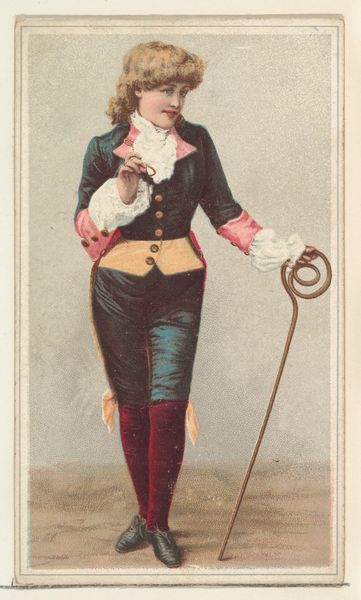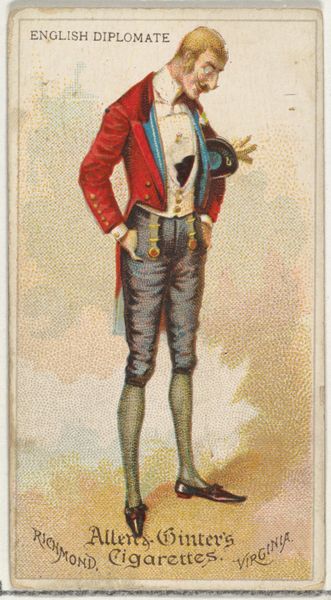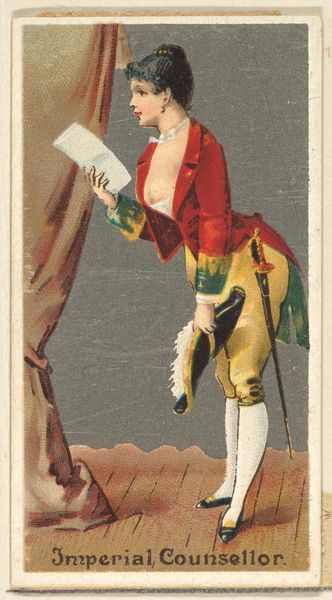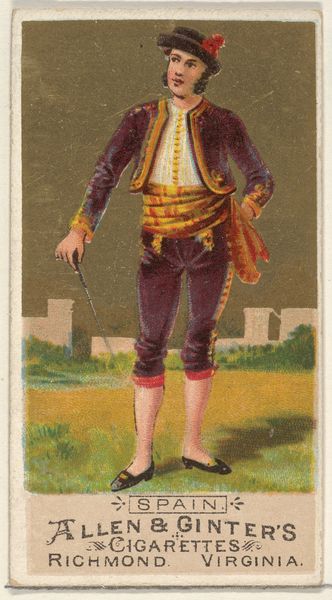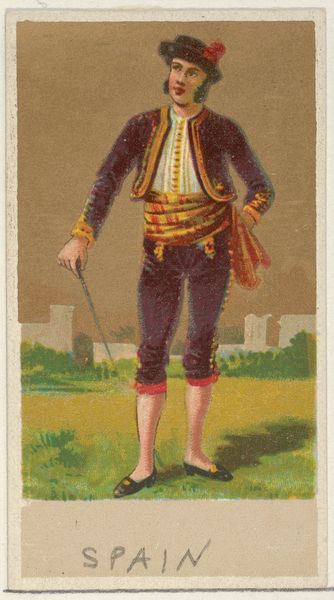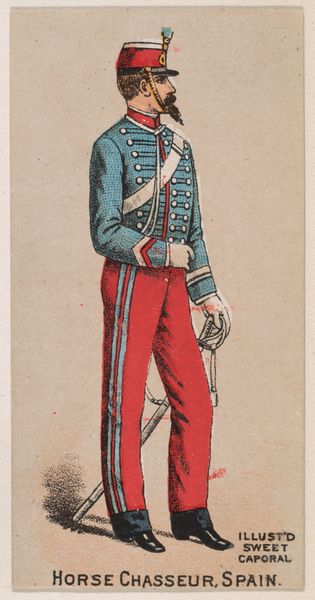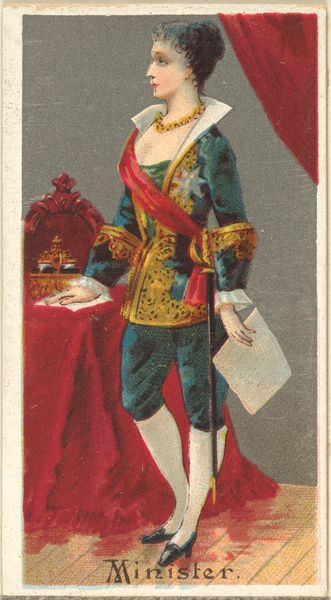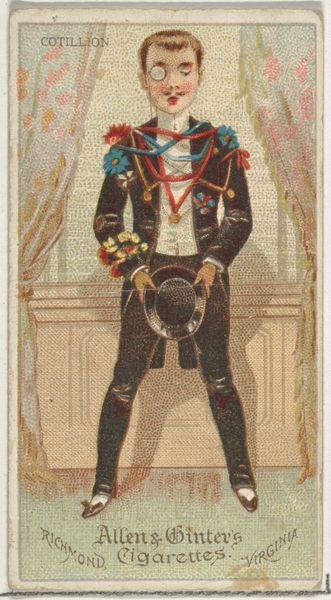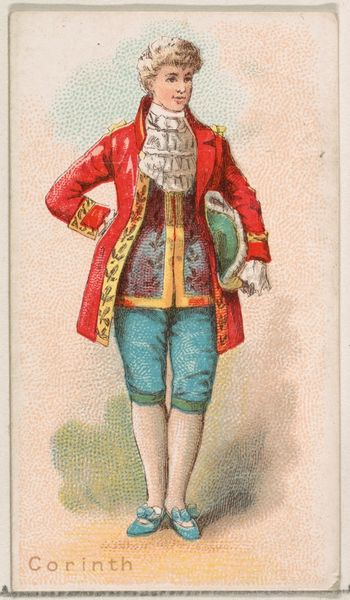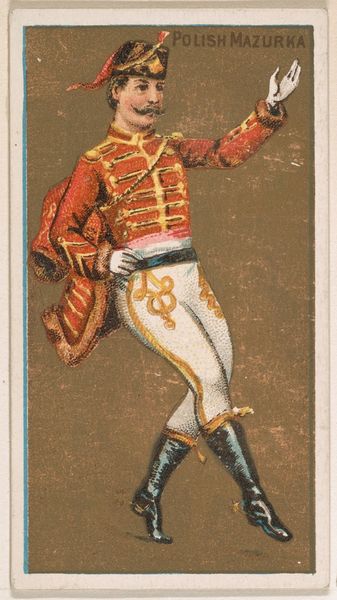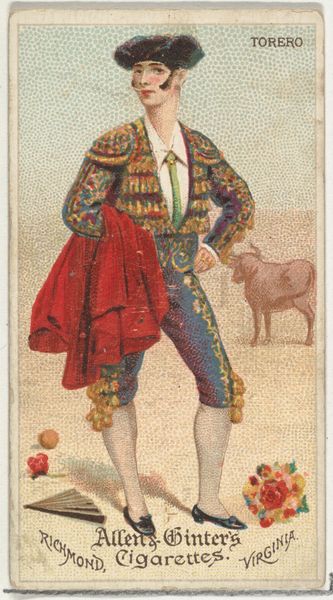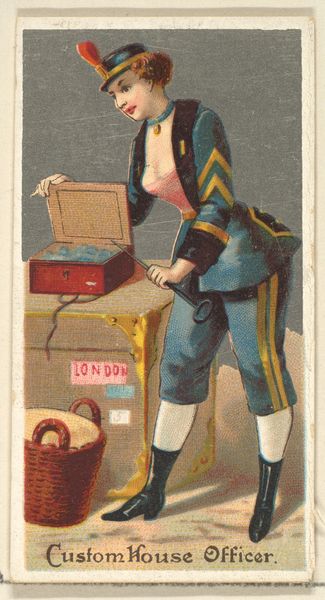
Bandmaster, from the Occupations of Women series (N502) for Frishmuth's Tobacco Company 1889
0:00
0:00
drawing, print, watercolor
#
portrait
#
drawing
#
art-nouveau
# print
#
watercolor
#
watercolour illustration
#
genre-painting
#
portrait art
#
watercolor
Dimensions: Sheet: 2 3/4 x 1 1/2 in. (7 x 3.8 cm)
Copyright: Public Domain
Editor: Here we have "Bandmaster" from the Occupations of Women series, printed in 1889 for Frishmuth's Tobacco Company. It’s a watercolor and print, and something about the contrast between the traditionally masculine role and the woman’s presentation is striking. What are your thoughts on how gender plays into our interpretation of this piece? Curator: It's a loaded image, isn't it? Consider the context: the late 19th century was a period of burgeoning feminism and anxieties surrounding changing gender roles. This Bandmaster, presented on a tobacco card, is both a nod to the “New Woman” entering the workforce and, potentially, a commodification of that very progress. Does the overt "femininity"—the frills, the exposed neckline—subvert or reinforce patriarchal expectations, do you think? Editor: I see your point. Maybe the hyper-feminine aspects are playing into existing stereotypes. The male gaze, essentially. So it's less about empowerment and more about consumption? Curator: Exactly. Consumption on multiple levels. We’re consuming an image, a narrative, and of course, tobacco. The "Occupations of Women" series participates in a wider visual culture that attempted to categorize and control female agency. How might we see this in relation to other contemporary images of working women? Editor: So, by looking at other imagery of working women at the time, we could contextualize just how progressive, or not, this depiction really was. And the connection to tobacco makes the message even more complicated, adding a layer of commercial interests into the mix. Curator: Precisely. And this work, at face value seemingly progressive, can be unpacked to reveal underlying societal tensions and commercial exploitation inherent in depicting women's expanding roles. Editor: I’m starting to see how important that deeper dive into historical and social context can be in revealing the nuances of a work like this. It is much more than meets the eye. Curator: Absolutely, this "Bandmaster" becomes a cultural artifact ripe with information about its time.
Comments
No comments
Be the first to comment and join the conversation on the ultimate creative platform.
